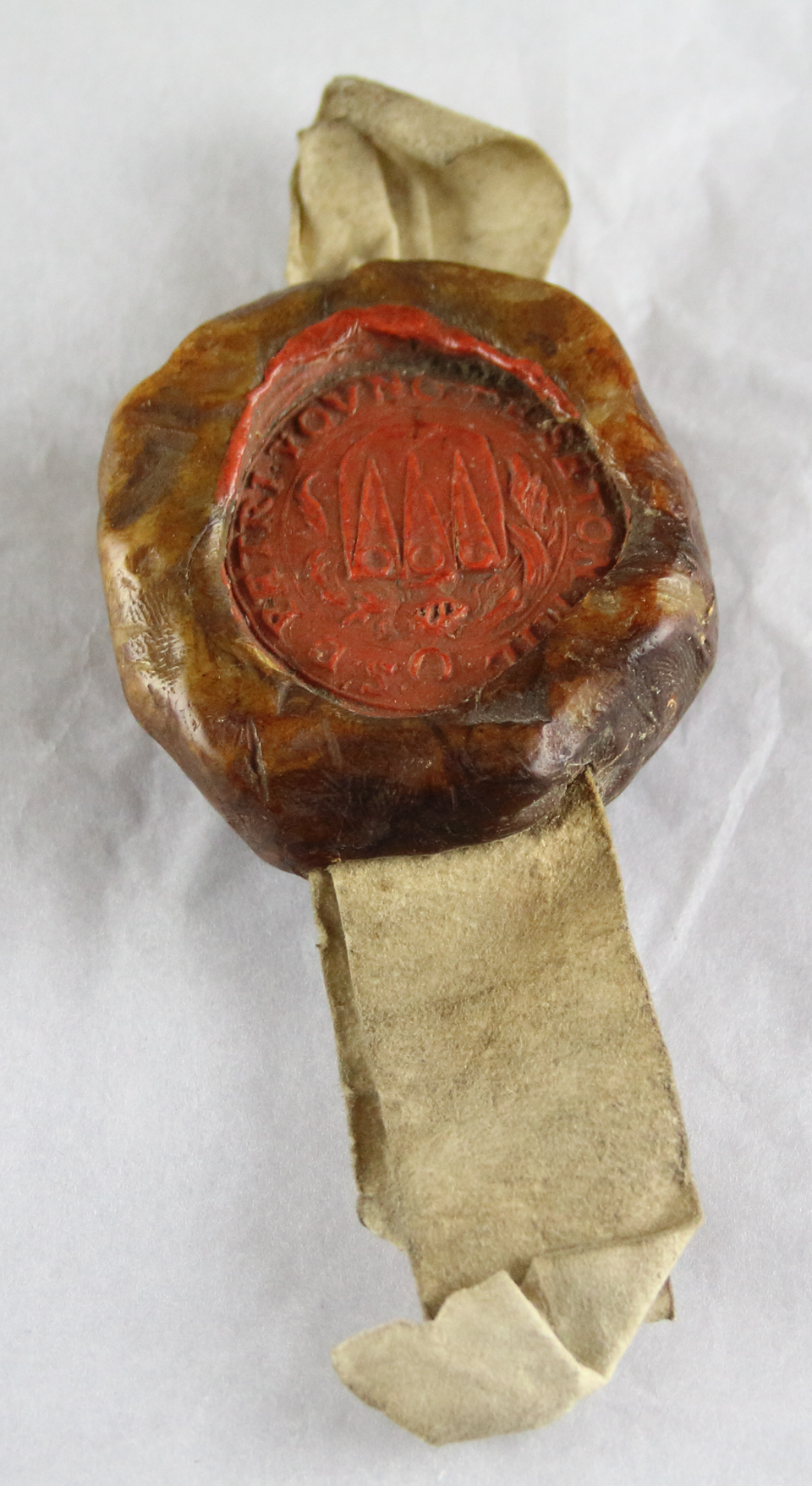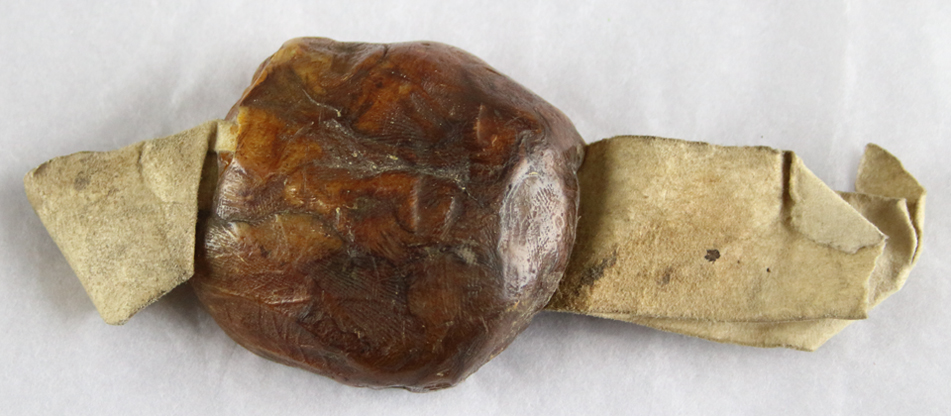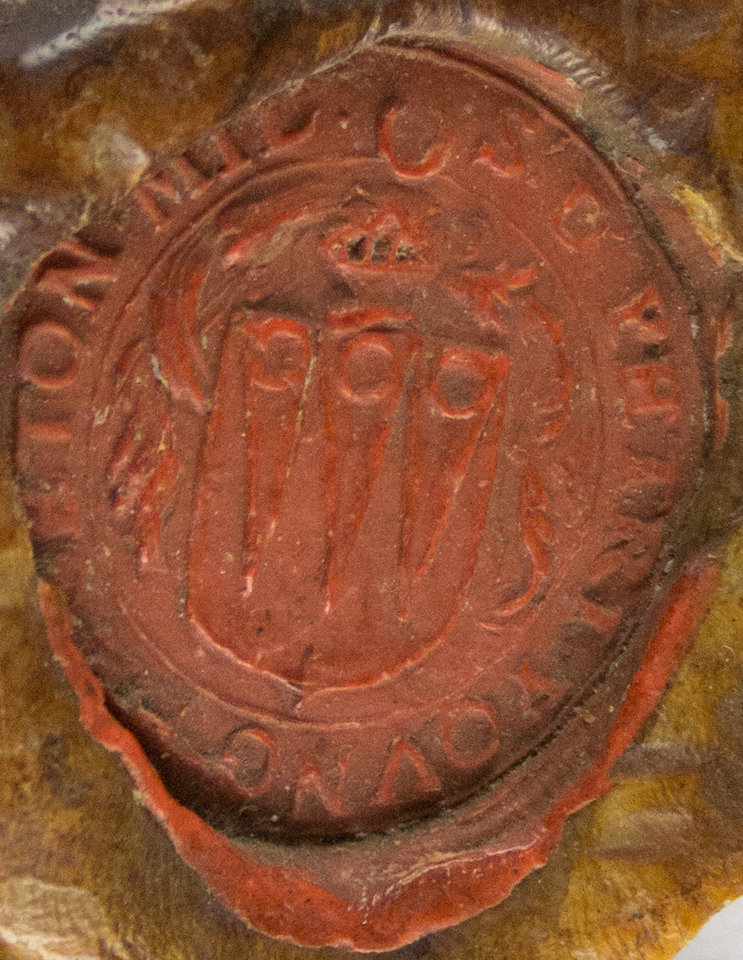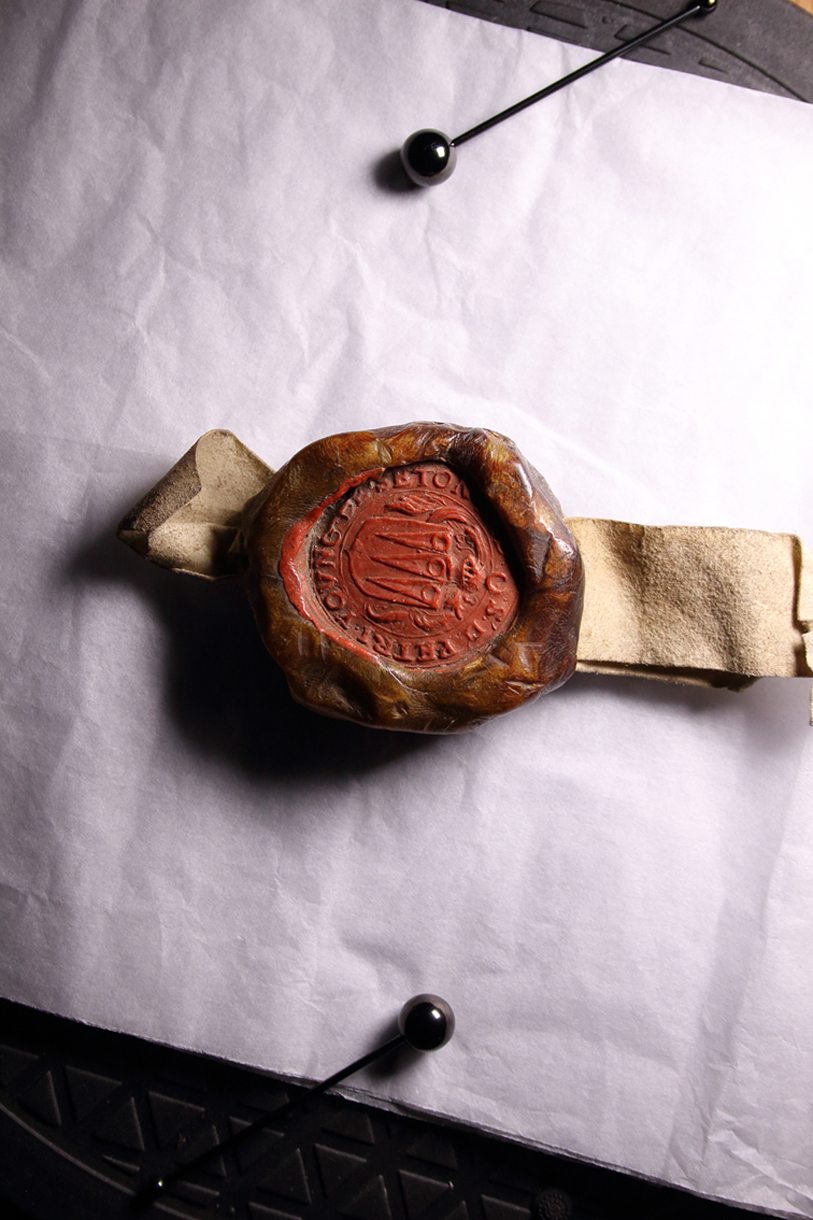Reading the Collections, Week 52: Seeing things in a different light.
I wanted to do something a little different for the last of the reading the collections blogs so I decided that it would be intriguing to look at an item in our collection in different ways.
Modern developments in digital imaging open up new fascinating and interesting ways of exploring old and fragile books, documents and historical artefacts for experts, researchers and the general public alike.

Seals by their nature are fragile and often broken, and their impressions can easily be lost through accidental damage or careless handling. Being able to look at them closely from all angles without risking further damage to them is a valuable tool for researchers.
The seal we are looking at is from the Papers of the Anstruther family of Balcaskie (msdep121/B41/1/4). It is still on its parchment tags, but is detached from the document which it originally authenticated.
Although this seal is from the Balcaskie collection, on inspection it is actually the seal of Sir Peter Young of Easter Seton (1544-1628) who was Tutor to James VI of Scotland along with George Buchanan. In 1577 Young was made Master Almoner, and was knighted in 1605. He purchased the estate of Easter Seton in 1580. At least two of his sons attended the University of St Andrews, including his fifth son, Patrick Young who became Librarian to James VI and Charles I and donor of the Young collection in 1614, one of the Foundation Gifts to the new Common Library.

The term ‘seal’ is usually applied to the impression produced when an engraved metal die or ‘matrix’ has been pressed into some soft material such as wax. A seal carries the mark of its owner, a portrait, device or coat of arms and were used to verify documents (such as charters, letters, writs) in much the same way as we use signatures to authenticate documents today. They could be attached to a document by a tag, tongue or cord, or placed directly on the face of the document.
While we have no idea what document this pendant seal was attached to, the red central disc of the seal identifies its owner for us. It is inscribed with the text S. D. Petri Young De Seton MIL [Seal of Master Peter Young of Seton, Knight] and the arms bear a shield with 3 piles with an annulet on each pile and a crescent for a crest.

The heraldic symbols, history and purpose of the seal are however not the main focus of this article. Rather, I want to introduce two different ways of viewing artefacts such as this using digital imaging techniques.
Photogrammetry is a technique that reconstructs the depth and shape of objects by analysis of a set of photographs. The technique is not new, having been used for military, astronomical and other scientific measurements since the mid-19th century. However in recent years, modern photographic and computing technology have made it a highly affordable alternative to laser scanning for the production of 3D virtual models.
Although photogrammetry is generally used for larger scale projects such as topographic mapping or architecture, it is very useful in being able to study a 3D image of an artefact that is extremely fragile, unable to withstand too much handling.
The 3D model is built from 192 photographs. These were taken in two batches, each of the seal face-up and face-down on acid-free tissue paper. We used Adobe Photoshop to mask out everything in the photographs apart from the seal itself, and then imported these into Agisoft Photoscan. Photoscan analysed the photographs and produced an estimate of each camera position, together with a loose cloud of points common to many of the pictures. This forms the basis for further stages – a dense cloud, creation of a mesh of surfaces joining together the cloud points, and the matching of each surface with a fragment of the most appropriate image to create the overall texture.

This final model has been uploaded to an online viewer, where it can be manipulated using the mouse in combination with SHIFT and CTRL keys to zoom, rotate and pan across the model.
https://skfb.ly/LIWM
Reflectance Transformation Imaging (RTI) is a much more recent technology which combines a series of photographs which are lit from different angles and taken from a static camera position. These are combined by software, and the resulting image can be illuminated by a virtual light shone from any direction and using a range of filters.
This technique can be used to enhance the object, revealing previously hidden information especially with objects that have more complicated surfaces. It is also useful in providing clues into the tools and techniques that were used in creating the originals.
RTI is gaining increasing importance in the heritage sector. Major organisations such as the Ashmolean, Smithsonian and members of The Institute for Digital Archaeology are all using it in the study of their own collections.
We have created our own RTI scan of the Peter Young of Seton seal which can be examined online.
This was produced from 42 photographs, processed by software called RTIBuilder. Either side of the seal we placed a pair of small reflective black spheres which the software uses to calculate the angle of the light in each image.

Rather than just “Reading the Collections”, these technologies now offer the opportunity for online visitors to interact directly with virtual models of the collections themselves.
Catriona Foote
Reading Room Team
Photogrammetry and RTI by Mike Arrowsmith
[…] Source: Reading the Collections, Week 52: Seeing things in a different light. […]
[…] ← Reading the Collections, Week 52: Seeing things in a different light. […]